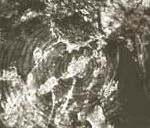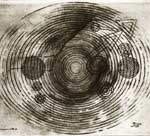The rock paintings of Cueva called Number One Punta del Este, Isla de la Juventud , made by Aborigines suffer ” significant ” damage caused by fungi , signs and even shooting guns, reported Saturday the official newspaper Granma reported EFE.
The cave, declared National Monument in 1981 , is affected by ” the growth of fungi and algae pigments on the drawings ” and ” the presence of irresponsible people that alter the natural conditions of the place ,” the Communist Party newspaper .
” There are even names and signs written above the concentric circles, as can be seen traces of shooting firearms against these , soot left by the torch lighting , while the fence before guarded the entrance of the cave no longer exists ” he added.
Site conditions were checked by an expedition earlier this year by specialists of the National Council of Cultural Heritage and the Ministry of Science , Technology and Environment.
One member of that team , archaeologist George F. Garcell , said ” the situation is worrisome,” because the preservation of the pictographs is in danger from the growth of mold .
Experts have called for ” establishing a protection plan ” site that includes retrieving the vegetation nearby to minimize the entry of sunlight and prevent photosynthesis of algae and fungi, and to limit vehicle access and unauthorized .
According to historical records , the first reference to the existence of cave paintings in the cave of the Isle of Youth was made by the French geographer Charles Berchon in a book published in 1904.
Subsequently , the Cuban Fernando Ortiz rediscovered the cave in 1922 and to report on it called it ” the Sistine Chapel of Cuba .”
In the decade of the sixties , the Cuban naturalist Antonio Núñez Jiménez actions directed cleanup and restoration of the pictographs , after which it rose to 213 the number of paintings reported.
The pictorial sets of Punta del Este show concentric circles of red and black color, a triangular arrow , zoomorphic faces, a snake , a cross, phallic representations and hieroglyphic -like figures.
DDC / Agencies / InternetPhotos / www.thecubanhistory.com
The Cuban History , Hollywood.
Arnoldo Varona , Editor
CUBA PHOTOS.
Isle of Pines ( Now Isle of Youth) Panoramic view of New Gerona.

PINTURAS RUPESTRES EN LA ‘ISLA DE LA JUVENTUD’ ABANDONADAS SUFREN DAÑOS.
Las pinturas rupestres de la llamada Cueva Número Uno de Punta del Este, Isla de la Juventud, hechas por aborígenes, sufren “notables” daños provocados por hongos, letreros y hasta disparos de armas de fuego, informó este sábado el diario oficial Granma, reporta EFE.
La cueva, declarada monumento nacional en 1981, está afectada por “el crecimiento de hongos y algas sobre los pigmentos de los dibujos” y “la presencia de personas irresponsables que alteran las condiciones naturales del lugar”, indicó el periódico del Partido Comunista.
“Incluso hay nombres y letreros escritos encima de los círculos concéntricos, mientras pueden apreciarse huellas de disparos de armas de fuego contra estos, hollín dejado por el encendido de antorchas, en tanto la reja que antes protegía la entrada de la cueva ya no existe”, añadió.
Las condiciones del sitio fueron comprobadas por una expedición realizada hace unos meses por especialistas del Consejo Nacional de Patrimonio Cultural y el Ministerio de Ciencia, Tecnología y Medio Ambiente.
Uno de los integrantes de ese equipo, el arqueólogo Jorge F. Garcell, dijo que “el panorama es preocupante” porque la conservación de las pictografías está en peligro ante la proliferación del moho.
Los expertos han pedido “establecer un plan de protección” del sitio que incluye recuperar la cobertura vegetal de los alrededores para minimizar la entrada de luz solar y evitar la fotosíntesis de las algas y hongos, así como limitar el acceso de vehículos y personas no autorizadas.
Según datos históricos, la primera referencia sobre la existencia de pinturas rupestres en la cueva de la Isla de la Juventud la realizó el geógrafo francés Charles Berchon en un libro publicado en 1904.
Posteriormente, el cubano Fernando Ortiz redescubrió la cueva en 1922 y al informar sobre ella la calificó como “La Capilla Sixtina de Cuba”.
En la década de los años sesenta, el naturalista cubano Antonio Núñez Jiménez dirigió acciones de limpieza y restauración de las pictografías, tras lo cual se elevó a 213 el número de pinturas reportadas.
Los conjuntos pictóricos de Punta del Este muestran círculos concéntricos de color rojo y negro, una flecha triangular, caras zoomorfas, una serpiente, una cruz, representaciones fálicas y figuras semejantes a jeroglíficos.
DDC/Agencies/InternetPhotos/www.thecubanhistory.com
The Cuban History, Hollywood.
Arnoldo Varona, Editor.







